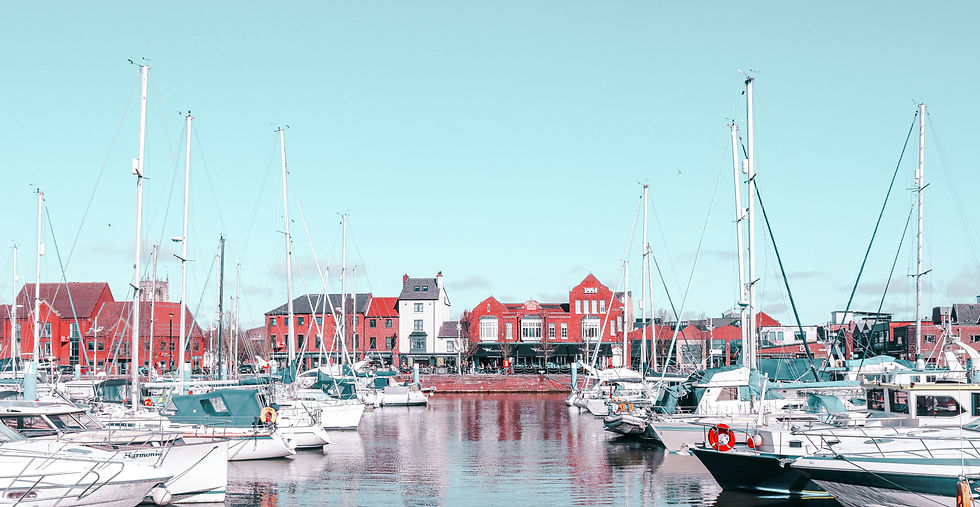Innovative Ideas Transforming Urban Design Projects in Denmark
- Frederick Rickmann

- 4 days ago
- 4 min read
Denmark is renowned for its forward-thinking approach to urban development. The country’s cities are evolving rapidly, embracing innovative ideas that blend sustainability, technology, and community engagement. These modern urban planning ideas are reshaping the way people live, work, and interact with their environment. This blog post explores some of the most exciting trends and projects transforming urban spaces in Denmark today.
Embracing Sustainability in Modern Urban Planning Ideas
Sustainability is at the heart of Denmark’s urban transformation. Cities like Copenhagen and Aarhus are leading the way by integrating green infrastructure and renewable energy into their urban fabric. One key strategy is the creation of green roofs and walls, which help reduce urban heat, improve air quality, and support biodiversity.
Another important aspect is the promotion of cycling and pedestrian-friendly streets. Denmark’s extensive network of bike lanes encourages residents to choose eco-friendly transportation, reducing carbon emissions and traffic congestion. Public spaces are designed to be multifunctional, combining parks, playgrounds, and community gardens to foster social interaction and environmental stewardship.
Examples of sustainable urban planning ideas include:
Installing solar panels on public buildings and residential complexes.
Developing rainwater harvesting systems to manage stormwater.
Using recycled materials in construction projects.
These initiatives not only contribute to environmental goals but also enhance the quality of life for city dwellers.

How Modern Urban Planning Ideas Enhance Community Well-being
Modern urban planning ideas in Denmark focus heavily on creating inclusive and vibrant communities. Planners prioritize accessibility, ensuring that public spaces and transportation are usable by people of all ages and abilities. This approach fosters social cohesion and reduces inequalities.
Mixed-use developments are becoming increasingly popular. These projects combine residential, commercial, and recreational spaces within walkable neighborhoods. This design reduces the need for long commutes and encourages local economic activity.
Community participation is another cornerstone of Danish urban design. Residents are actively involved in decision-making processes through workshops, surveys, and public forums. This collaborative approach ensures that developments reflect the needs and desires of the people who live there.
Key features promoting community well-being include:
Designing safe and well-lit public spaces.
Creating playgrounds and sports facilities for children and youth.
Incorporating cultural and artistic elements into urban landscapes.
By focusing on these elements, Danish cities are becoming more livable and enjoyable for everyone.

What are the 5 D's of Urban Planning?
Understanding the 5 D's of urban planning is essential for grasping how modern cities are designed to function efficiently and sustainably. These principles guide planners in creating environments that support healthy lifestyles and reduce environmental impact.
Density - Refers to the number of people or buildings in a given area. Higher density supports public transit and local businesses.
Diversity - Involves mixing different land uses such as residential, commercial, and recreational spaces to create vibrant neighborhoods.
Design - Focuses on the physical layout and aesthetics of urban spaces, including street design, building placement, and public amenities.
Destination Accessibility - Measures how easily residents can reach key locations like workplaces, schools, and shops.
Distance to Transit - Ensures that public transportation options are within convenient reach to reduce reliance on private vehicles.
Denmark’s urban projects often incorporate these principles to create balanced and sustainable communities.
The Role of Technology in Shaping Denmark’s Urban Landscape
Technology plays a pivotal role in Denmark’s urban innovation. Smart city solutions are being integrated to improve efficiency, safety, and environmental performance. Sensors and data analytics help monitor traffic flow, air quality, and energy consumption in real time.
One notable example is the use of intelligent lighting systems that adjust brightness based on pedestrian presence, saving energy while enhancing safety. Additionally, digital platforms enable residents to report issues, participate in planning, and access city services more easily.
Urban planners also use 3D modeling and virtual reality to visualize projects before construction begins. This technology allows for better stakeholder engagement and more informed decision-making.
Technological advancements in urban design include:
Smart waste management systems that optimize collection routes.
Real-time public transit tracking apps.
Integration of electric vehicle charging stations in public areas.
These innovations contribute to creating more responsive and adaptive urban environments.

Integrating Nature and Urban Life: Biophilic Design in Denmark
Biophilic design is gaining traction in Danish urban planning as a way to reconnect people with nature. This approach incorporates natural elements into the built environment to improve mental health, reduce stress, and enhance overall well-being.
Examples include urban forests, green corridors, and water features that provide habitats for wildlife and recreational spaces for residents. These natural elements are carefully woven into city layouts to maintain ecological balance and promote biodiversity.
Denmark’s commitment to biophilic design is evident in projects like the transformation of former industrial sites into green parks and the preservation of existing natural landscapes within urban areas.
Practical recommendations for biophilic urban design:
Planting native trees and shrubs along streets and in parks.
Creating community gardens that encourage local food production.
Designing buildings with natural ventilation and daylighting.
By integrating nature into urban life, Danish cities are fostering healthier and more sustainable communities.
Looking Ahead: The Future of Urban Design in Denmark
Denmark’s innovative urban planning ideas are setting a global example for sustainable and inclusive city development. As challenges like climate change and population growth continue, Danish cities are adapting by prioritizing resilience and flexibility.
Future projects are expected to focus on circular economy principles, where waste is minimized, and resources are reused. There will also be greater emphasis on digital connectivity and smart infrastructure to support evolving urban needs.
For those interested in exploring more about urban design projects in Denmark and beyond, staying informed about these trends is essential. The integration of sustainability, technology, and community engagement will continue to drive the transformation of urban spaces.
By embracing these innovative ideas, Denmark is not only improving the quality of life for its residents but also contributing to a more sustainable and equitable future for cities worldwide.



Comments